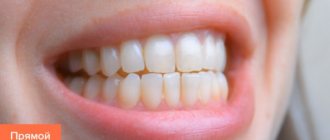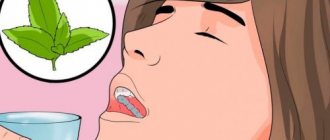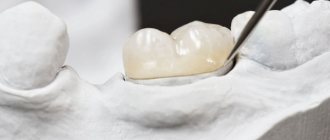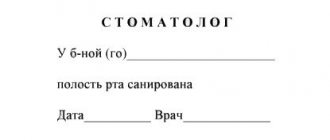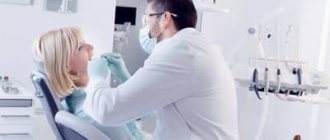Existing indications for surgery
With a radical method of solving dental problems, the tissues of the oral cavity are inevitably injured. Due to damage to nerves and blood vessels, the patient experiences moderate pain, the injured area turns red and swells.
To minimize the consequences of removal and eliminate possible complications, the patient needs to have a strong immune system. The procedure is contraindicated for physically weakened people and those in whose body pathological processes are detected.
That is why in a number of situations surgery under a certain set of circumstances is excluded.
All indications should be divided into two subgroups:
- events in which surgical intervention must be performed urgently;
- when the extraction can be scheduled for a specific time, eliminating rush.
Immediate measures
When figuring out “when and why it is necessary to remove a tooth and in what cases this should not be done,” it is important to know that urgent removal is carried out in the presence of an inflammatory process. When inflammation has already led to the appearance of a tumor. Such complications may include granuloma, cyst, phlegmon, abscess, etc. In addition, emergency surgery is performed in case of injury to dental tissue or a fracture of the crown, which leads to the development of neuritis and other damage.
Pulpitis or periodontitis are not indications for mandatory tearing out. Sometimes, with these pathologies, an element of the series can be preserved. This largely depends on the size of the affected area and the individual characteristics of the patient. However, when there is a risk of spreading infection, radical action is inevitable.
Only timely elimination of the source of infectious agents can protect a person from serious consequences in the form of many dangerous diseases.
In what case is it necessary to extract a tooth as planned?
If there is no obvious danger to the body, but damage to dental tissues is 70% or more, pathologies are identified in the root zone and pulp, surgical intervention is planned for a certain time. Typically, the removal procedure is prescribed for advanced periodontitis or degree 3-4 mobility of elements. Sometimes they resort to pulling out before installing braces. Eliminating one or more units frees up space for subsequent movement during leveling.
Third molars are found in many people and are rudiments that have no functional significance. Often their growth occurs in the wrong direction, they do not fully erupt and contribute to the curvature of neighboring elements. This should be kept in mind when asking the question: “is it necessary to remove a wisdom tooth?” The consequences of the formation of molars are naturally inflammatory processes and the appearance of caries. Due to possible serious complications, figure eights are most often pulled out at the first alarming manifestations.
Planned indications also include cases when the patient has excess elements or unformed parts in the oral cavity.
It is up to the dentist to decide whether to perform surgery or not. Only he is able to correctly assess the condition of the patient and his mouth. Dentika specialists consider the clinical picture as a whole, take into account the likely consequences and make a decision. If it is impossible to avoid surgery, they plan to perform a removal procedure.
About saving teeth
In their practice, dentists sometimes encounter two extremes regarding the issue of tooth preservation on the part of patients. Some patients insist on removing a tooth that can still be saved; others ask the doctor to save a tooth, which, unfortunately, can no longer be treated, despite all the possibilities of modern dentistry.
Why, in both cases, should patients pay close attention to the doctor’s explanation regarding the optimal dental treatment plan in each specific case, and how can they correctly place punctuation marks in the question “save cannot be deleted”? Today we will try to highlight this aspect.
So, why do dentists strongly recommend saving every tooth that can be saved, even if the patient is ready to easily say goodbye to his tooth? The fact is that the human body is a perfect system. All its organs and systems are closely interconnected and perform a specific function. Therefore, in particular, one’s own, that is, natural, teeth last a long time, and their preservation is the most physiological for a person. It is necessary to understand that a crown or veneer is a dental prosthesis when it is necessary to replace a defect in the dentition. Yes, as accurate as possible; yes, modern; yes, the most effective in function and perfect from an aesthetic point of view, but still a prosthesis. But it is precisely what is physiological that is the most functional and long-term foundation, and in relation to oral health - these are your teeth. Therefore, if possible, you should definitely fight for every tooth to the end.
We all understand perfectly well that when acute toothache occurs, all a person wants is to get rid of the pain as soon as possible. However, tooth extraction is not an option (in any case, it is far from the only one, and certainly not always the most rational one). It is much more reasonable (if there are indications, of course) to treat the tooth and restore its integrity, even if it takes some time and causes some discomfort at certain stages of treatment. Notice we said discomfort, not pain. Primary acute pain will be relieved at the very first stage of treatment.
Also, what follows a tooth extraction? According to all protocols of modern dentistry, for adequate and competent replacement of a defect in the dentition, dental implantation is required, the purpose of which is not only and not so much aesthetics, but rather the prevention of resorption (loss) of bone tissue in the area of removal. We have already written about the consequences of resorption in our articles “Advantages of implants” and “When osteoplasty is needed in dentistry.” If for some reason the patient does not consider the option of implantation, then the defect in the dentition should be compensated with the help of a bridge. But no matter what option you choose, you need to understand that it is imperative to compensate for the defect in the dentition; otherwise, sooner or later a series of inevitable changes will follow, which will lead to an uneven load on the remaining teeth (which, in turn, will lead to their rapid destruction), malocclusion, tooth displacement, gum problems and other deformations. Each of these problems ultimately leads to disruption of the entire dental system. And the treatment of problems affecting the entire system requires much more time, effort, financial costs, and, in addition, greatly reduces the possibilities of adequate replacement of the defect in terms of function, reliability and aesthetics.
Most patients take the loss of one tooth very lightly. And here it is extremely important to really listen to your doctor in order to adequately understand the seriousness of the situation and already at the beginning take the right steps that can prolong the health of the dental system for as long as possible.
The other extreme is trying to save a tooth that, unfortunately, cannot be saved. If your dentist recommends tooth extraction, there are good reasons for it. A decayed tooth that cannot be restored is a time bomb: it can become a source of contamination/infection, can become inflamed and cause acute pain when going to the dentist may be impossible or extremely inconvenient (for example, at night, on a business trip or on vacation). The tooth to be removed will also place uneven stress on the remaining teeth, overloading them and contributing to their premature destruction. Reliance on a non-viable tooth in an orthopedic structure (in the manufacture of a bridge or removable/clasp prosthesis) will be extremely unreliable and can cast doubt on the entire orthopedic structure.
In dentistry, as in any other area of medicine, reliability and long-term results, accuracy and predictability of treatment come first. Therefore, when placing punctuation marks in the sentence “save cannot be deleted,” the patient should listen carefully to his dentist, who will explain all the risks and options for choosing the most rational treatment plan in each specific case to maintain long-term oral health.
0
Which teeth cannot be treated - when they cannot be removed according to contraindications
A radical method of eliminating pathology may be unacceptable in case of systemic diseases and a weakened human immune system. These circumstances do not guarantee adequate resistance to pathogens and full recovery of the body. The rehabilitation process in this situation can be significantly delayed, which is why the development of numerous complications cannot be ruled out.
Situations in which surgical intervention is extremely undesirable include:
- ARVI;
- 1-3 trimester of gestation;
- menstrual period, as well as 2 days before and after;
- exacerbation of herpes;
- acute form of heart and vascular diseases (stroke, heart attack, crisis);
- head injuries.
Knowing which teeth are pulled out and when elements of the dentition need to be removed, it is important to remember that sometimes extraction cannot be avoided even if there are obvious contraindications. Urgent removal can be carried out in a hospital, when the patient is under constant medical supervision. Indications for compliance with stationary conditions during the operation are:
- poor blood clotting;
- severe diabetes mellitus;
- dysfunction of the central nervous system;
- mental disorders.
We must not lose sight of the fact that in some cases special preparation may be required before surgery. If the patient has pathologies of the heart and blood vessels, the use of adrenaline compounds as anesthesia is undesirable. And hemophilia is a reason for a preliminary plasma transfusion.
Contraindications for pulling out elements of the dentition include some dental problems. These include: herpetic stomatitis, gingivitis, candidiasis, malignant tumors in the oral cavity. If a cancerous tumor is present, it is also eliminated.
So, should I remove the tooth or not? It is important to remember that the above prohibitions on the operation are temporary. When the patient's condition stabilizes, these restrictions will no longer apply to him.
Why you shouldn’t refuse tooth extraction
Our reluctance to part with healthy teeth is legitimate and understandable. But an orthodontist drawing up a treatment plan cannot be guided solely by the patient’s wishes. The doctor focuses on the goal set for him and uses optimal methods that correspond to the real state of affairs to achieve it.
The need for removal is always carefully considered, because treatment with removal takes a lot of time, and for the dentist it also results in a larger amount of work and much greater responsibility. It is also necessary to understand that to make a decision on removal, the doctor does not need only a TRG image (teleradiogram). A treatment plan will be drawn up after obtaining a clear understanding of the patient's jaw anatomy to ensure that their facial contours are maintained after realignment.
Extraction
Conventional removal is a procedure that takes a short time (usually a few minutes). Its implementation is relevant when eliminating elements with one root. When it comes to pulling out multi-rooted units, the process is classified as complex. Such cases include working with a figure eight or a severely damaged tooth.
Simple surgery
As noted above, the operation will not require an impressive amount of time. Dentiki dentists act in stages:
- First of all, the doctor examines the patient and inquires about the presence of allergic reactions to drugs, acute and chronic diseases. The specialist also clarifies whether the patient is taking medications during this period.
- Next, the doctor sends the client for an x-ray. Depending on the situation, a targeted or panoramic shot may be needed.
- The dentist begins active work with pain relief. After all, painless extraction is impossible without the use of anesthesia.
- Now the dentist begins to loosen the problem tooth. Carefully pushes back the gum with a special tool, grabs the crown with forceps or pries it up and gently rocks it. These actions allow you to widen the hole and break the periodontal ligaments.
- At the most important stage, the doctor removes the element of the dentition along with the root from the alveoli.
- At the end of the procedure, he will have to stop the bleeding. The damaged area is covered with a cotton swab moistened with an antibacterial compound. After 20-30 minutes it can be removed. This time is usually enough for the bleeding to stop and a blood clot to form.
When deciding which teeth can or cannot be removed (pulled out), you should know that if a pathological formation is observed at the root tip, another x-ray should be taken immediately after surgery. In cases where an x-ray confirms that part of the cyst or granuloma is still inside, it will be planned to remove it.
Dentics also practices non-traumatic methods using an ultrasonic scaler.
Complex extraction
Such operations include the removal of figure eights, elements with curved roots, a destroyed crown, or samples (incisors, canines, molars) previously subjected to resorcinol-formalin therapy. This method of treatment leads to the coloring of individual units in a pinkish color and the fragility of their walls.
The duration of the process can be 1 hour or more. Often the root and coronal zones are sawed to remove them from the bone tissue. In case of retention, the gums are first peeled off. Completely destroyed or broken fragments are initially “turned out” with a special elevator, since it is impossible to get them out with ordinary forceps without preparation, and excessively sharp actions can lead to additional damage to the oral cavity. At the end of the operation, sutures are required.
If a purulent process is detected, the neoplasm is opened and the outflow of the accumulation of pus is organized. Next, the drainage system is removed and secured to prevent suppuration.
What teeth are usually suggested to be removed?
To maintain symmetry, teeth are usually removed in pairs. The most rational way to free up space for teeth straightening is to remove the “eights” - wisdom teeth. Their functionality is low, they often cause discomfort to their owners and often cause changes in the correct bite - if they grow at an angle, shifting the remaining teeth to the center. In this case, their removal is simply necessary to restore a physiological bite.
The situation is more complicated with patients who have problems with the dentition due to a lack of space on the front (front) part of the jaw. If the front teeth are crowded, a procedure may be suggested to remove premolars—usually quads. They have small roots and are the easiest to remove, and in most cases their absence does not lead to any discomfort. If the patient’s “fours” are healthy, but the “fives” or “sixes” turn out to be problematic, a decision may be made to remove the last pair.
Pulling out milk elements
The first incisors and canines fall out on their own with age. This happens during the period of change in the temporary bite. However, there are often cases when it is necessary to resort to extraction before the onset of natural loss. The need for it is determined by a dental specialist. Parents just have to listen to his recommendations and not put off solving the problem until “later.”
It is a big mistake to consider that various pathologies of milk samples are insignificant and that it is not necessary to take action to eliminate them. Yes, teeth will certainly fall out on their own over time, but pathological deviations may well be transferred to the developing permanent elements. As a result, they will erupt already sick.
Premature tearing is resorted to when inflammation occurs, which is provoked by an advanced form of caries, pulpitis or periodontitis. In all these cases, it is no longer possible to restore the crown. If there is more than 1 year left before the bite changes, the installation of dentures is necessary. Otherwise, the series will inevitably become distorted, which is fraught with consequences.
The most difficult thing in working with children is dealing with fragile dental walls. The child should not be in pain during the procedure. It is very easy to crumble a thin coronal surface with large forceps, so instead they use a special smaller and lighter version.
A fragment of a broken medical instrument gets stuck in the canal.
Such cases, unfortunately, do happen. And they are complicated by the fact that it is difficult for the doctor to remove the foreign body, since he does not see it. Look for a clinic that uses a dental microscope. Using this equipment, the dentist will see the canal and the object stuck in it, after which he can remove it using a special tool. Is it necessary to remove a tooth if treatment is possible? Of course not. The dentist will process the canal, eliminate inflammation and relieve you of the prospect of thinking about implantation.
Extraction of problematic eights
Most often, molars initially have an incorrect position or are bent during the process of formation. When asking a specialist whether “it’s worth pulling out a tooth,” keep in mind that such elements must be eliminated. Without timely surgical intervention, they can interfere with the normal functioning of neighboring units, destroy their root system, lead to the curvature of an entire row of teeth and the development of harmful bacteria in the oral cavity.
Removal is a complex process. First of all, the doctor cuts the gum and moves it back. Then he carefully loosens and “turns” the figure eight using an elevator. Often, initially he has to saw the crown with a drill, which involves further extraction in parts. Only after all necessary actions have been completed, the dentist proceeds to suturing.
Does it make sense to wear braces without removing teeth?
As we have found out, removal is required in cases where there is not enough space in the jaw for the correct arrangement of teeth. Unfortunately, without extraction in such situations, orthodontic treatment will be ineffective. The teeth, taking the desired position, will either be forced to shift their inclination, or simply will not budge. Only timely orthodontic treatment in childhood will help to avoid removal.
Publisher: Expert magazine about dentistry Startsmile.ru
Author of the material: Yaroslav Ikonnikov
Possible complications
Any operation is associated with a number of unpleasant moments for the patient that arise after it is performed. Moderate pain, swelling, active secretion of saliva, blood, difficulty opening the mouth and poor general condition are the norm. All these “side effects” completely disappear after a certain time. As a rule, with a simple procedure, negative manifestations are neutralized within 2-3 days. In difficult situations, rehabilitation may take 1 week or even more.
When determining why a tooth should be removed and who should do it, it should be remembered that one of the most severe complications of removal is alveolitis. This pathology is an inflammatory process in the hole left after the removal of a fragment of the dentition. With progressive inflammation, a person’s temperature rises, the smell of rot appears from the oral cavity, and the wound itself becomes covered with a gray coating. The development of pathology is accompanied by increasing pain. Often the sharp pain radiates to the eye, temple or ear. This problem requires an urgent solution. Otherwise, further infection of the entire body is inevitable.
The gums can also become inflamed. This happens mainly due to excessive tissue trauma. The inflammatory process is accompanied by active suppuration. If you ignore the situation, the occurrence of periostitis is possible.
Equally important in the postoperative period is the presence of a blood clot closing the wound. If it is not there, the hole dries out. This is accompanied by bad breath and severe redness of the injured area. Sometimes, during a complex procedure, the nerve endings become irritated. The patient's tongue, lips, cheeks, and even chin may become numb.
Most often, these negative sensations disappear after 5-10 minutes.
How does healing proceed?
The tissues usually heal within 2-3 weeks. During this period, a person often experiences itching, indicating the proper course of the process. During rehabilitation, it is enough to follow the recommendations of your doctor to avoid negative consequences.
In the absence of complications, healing proceeds quickly and does not cause any particular inconvenience to the patient. But if severe pain and other unnatural manifestations occur during the recovery period, you should consult a specialist as soon as possible. Painful sensations can signal inflammation and the appearance of dangerous pathologies.
Postoperative care
To avoid disruptions in tissue restoration after surgery, follow a number of tips from dentists:
- Avoid eating for 2-3 hours after the procedure;
- do not touch the injured area with your tongue, fingers or foreign objects;
- do not chew on the side where the removal was performed;
- on the first day, refrain from cleaning your mouth;
- do not drink drinks through a straw (so as not to create a vacuum);
- do not go to the bathhouse, solarium, do not take a hot shower;
- eliminate sour, salty and sweet foods from your diet for a while;
- try not to get too cold;
- Check with your doctor in advance about what painkillers you can take after surgery.
Case 4. The source of inflammation at the root of the tooth - the so-called. cyst
Imagine the situation.
A tooth that previously did not have a filling or was previously treated endodontically begins to hurt. An examination is carried out, X-ray control is done, but often a more informative cone-beam computed tomography CBCT or, as many say, a 3D x-ray is performed. A dental cyst is detected. The doctor recommends removing the tooth because there is a large area of inflammation at the top of the tooth root, caused by an infection in the root canal. The infection gets beyond the root tip and causes inflammation. This inflammation can be treated by removing the infection from the root canal. It is easier for a doctor who does not have the knowledge and treatment methods to remove a tooth.
How to do it right:
There is no need to remove the tooth. In the case of a dental cyst, it is necessary to carry out diagnostics, examination and high-quality treatment under the control of an operating microscope with isolation of the working field, followed by hermetically sealed restoration of the tooth at the stage of endodontic treatment. The recommendation is simple:
before removing a tooth, consult a professional. You may not need tooth extraction! This means that sinus lifting, implantation and prosthetics procedures following the removal will not be necessary.
approximate cost
Having found out in what cases a tooth must be removed, how to understand that it is impossible or, on the contrary, it is necessary to remove it without delay, whether this can be prevented - it is worth finding out the prices for services. Thus, a procedure at Dentic will cost a client an average of 3,978 rubles. A lot depends on individual aspects: the patient’s condition, the degree of neglect of the case, drug tolerance. And, of course, if, at the time of treatment, concomitant pathological abnormalities are discovered that require preliminary elimination, surgical intervention will be more expensive.
The patient has the last word
In any case, tooth extraction is not a common, everyday practice for an orthodontist. The decision on the advisability of removing wisdom teeth and premolars is made only after a thoughtful diagnosis of the patient and a thorough analysis of the consequences of such an intervention.
You should not be afraid of the void in the dentition formed after the removal of premolars. When wearing self-ligating braces installments , neighboring teeth will move into this place, quickly restoring the visual integrity of the dentition.
Once you decide to straighten your teeth, you need to find an orthodontist whom you can trust to create your future beautiful smile. If you initially do not agree to surgery and do not want to part with healthy teeth, or the specialist’s evidence does not seem reasonable to you, consult with other doctors. The result of treatment, one way or another, will depend on your mood, and the final say in choosing a treatment plan remains only with you.






